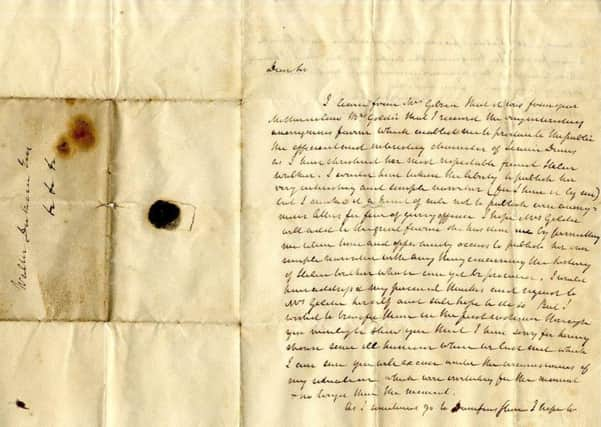Sir Walter Scott letter goes under the hammer


It has been widely acknowledged that Jeanie Deans, the central character in Sir Walter Scott’s The Heart of Midlothian, was based on the true story of Helen Walker, who walked barefoot from Edinburgh to London to plead for her sister’s life.
Now the autographed letter confirms Scott’s inspiration and the genuine piece of literary history is being sold by Nottingham auction house Mellors and Kirk later this month.
Advertisement
Hide AdAdvertisement
Hide AdAuctioneer Nigel Kirk said: “Scott received an anonymous letter informing him of the story of Helen Walker who walked barefoot to London to plead with the Duke of Argyll for her sister’s life after she was accused of murdering her own infant.
“The letter provided the inspiration for the plot of the Heart of Midlothian, perhaps Scott’s most famous best seller and one that is generally regarded as the finest of Scott’s Waverley Novels.
“Scott used Helen Walker’s story as his inspiration and this letter, which is known to Scott scholars, provides the genuine evidence and for this reason it is historically extremely important.
“I expect there to be a great deal of interest in this letter, from both collectors and museums.”
The letter which is dated March 5, 1830, was written to the Rev Dr David Dow, of Irongray in Dumfries and Scott talks about the construction of “a simple monument” to Helen Walker.
She died in 1791 and, as a gesture of gratitude Scott paid for the production of a memorial alongside her grave in Irongray churchyard.
Sir Walter Scott is credited as the first historical novelist and the first English-language author to have a truly international career - known around the world, even in the early 19th century.
The letter, which is valued at between £200 and £300, is being auctioned on November 26.